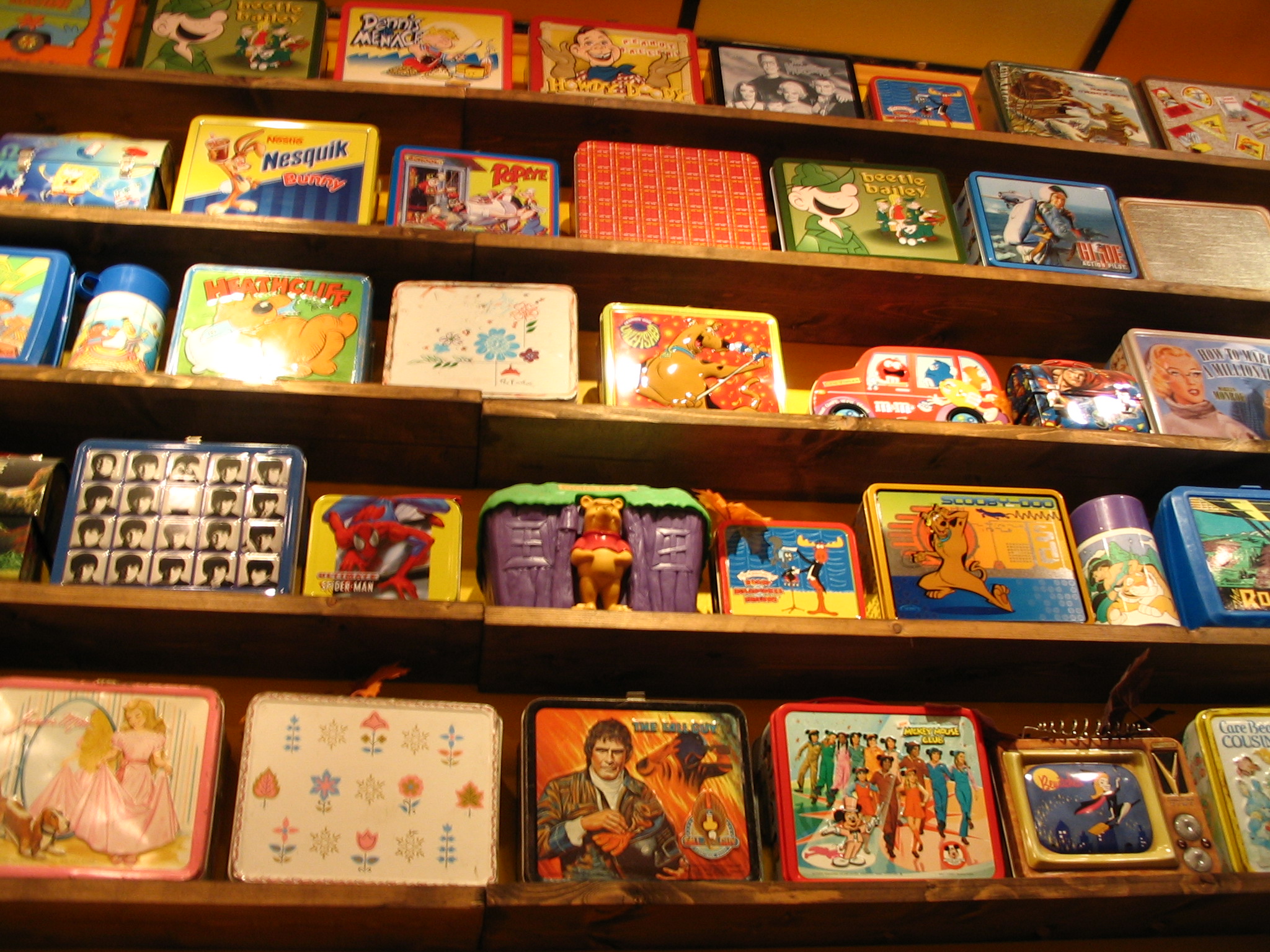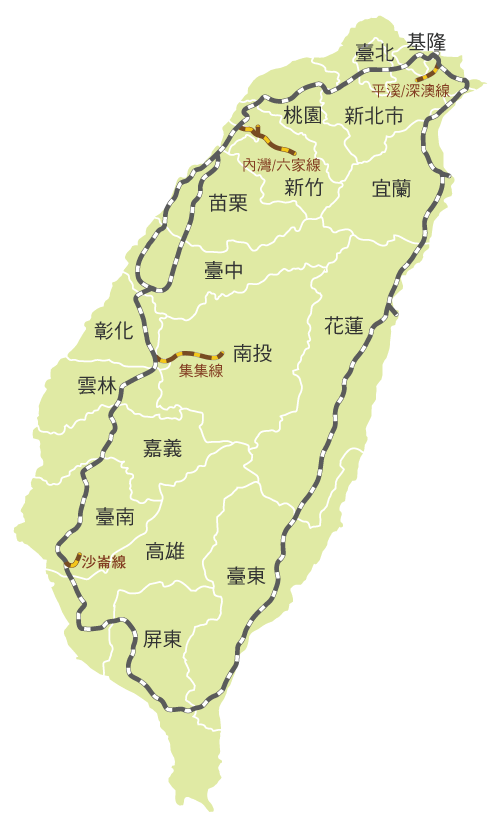|
Wu Tao Chishang Lunch Box Cultural History Museum
The Wu Tao Chishang Lunch Box Cultural History Museum () is a museum about lunch boxes in Chishang Township, Taitung County, Taiwan. The museum also serves as a restaurant. History The museum was opened in 2002 by Chishang Township Office and Chishang lunchbox vendors. Architecture At the front of the building lies two vintage rolling stocks offer the nostalgic environment for a time when travelers would buy a lunch box to take with them on their train journey. On the second floor lies the museum which is devoted to the local rice culture. Transportation The museum is accessible within walking distance southeast from Chishang Station of Taiwan Railways. See also * List of museums in Taiwan This is a list of museums in Taiwan, including cultural centers and arts centres. Kaohsiung City * Chung Li-he Museum * Cijin Shell Museum * Fongshan Community Culture Museum * Former British Consulate at Takao * Hamasen Museum of Taiwan Rai ... References External links * ... [...More Info...] [...Related Items...] OR: [Wikipedia] [Google] [Baidu] |
Chishang, Taitung
Chishang Township () is a rural township in Taitung County, Taiwan. Chishang was founded by indigenous Makatao from Pingtung 160 years ago, along with the other immigrants, including Taivoan from Kaohsiung and very few Siraya from Tainan later in the 1950s. The indigenous Night Ceremony has been held in Chishang annually in November. Geography The township is located at the Huatung Valley. Administrative divisions The township comprises 10 villages: Dapo, Dapu, Fuwen, Fuxing, Fuyuan, Jinyuan, Qingfeng, Wanan, Xinxing and Zhenxing. Tourist attractions * Chihshang Silkworm Recreation Farm * Dapo Pond * Du's Garden * Hakka Cultural Park * Mr. Brown Avenue * Rice Village Museum * Taitung Veteran's Farm * Taiwan Sugar Pastoral Farm Resort * Wu Tao Chishang Lunch Box Cultural History Museum The Wu Tao Chishang Lunch Box Cultural History Museum () is a museum about lunch boxes in Chishang, Taitung, Chishang Township, Taitung County, Taiwan. The museum also serves a ... [...More Info...] [...Related Items...] OR: [Wikipedia] [Google] [Baidu] |
Taitung County
Taitung County (; Mandarin pinyin: ''Táidōng Xiàn''; Hokkien POJ: ''Tâi-tang-koān''; Hakka PFS: ''Thòi-tûng-yen''; Paiwan: ''Valangaw'';lit:Eastern part of Taiwan) is the third largest county in Taiwan, located primarily on the island's southeastern coast and also including Green Island, Orchid Island and Lesser Orchid Island. Name While its name means "Eastern Taiwan", it is also known as "Houshan" () by many of the locals, meaning behind the mountains or the back mountains. History Qing Dynasty In 1887, the new Fujian-Taiwan Province included Taitung Prefecture as one of four prefectures. Empire of Japan During the Japanese rule of Taiwan, Taitung County was administered as Taitō Prefecture. Republic of China After the handover of Taiwan from Japan to the Republic of China on 25 October 1945, Taitung was established as a county of Taiwan Province on 25 December the same year. Geography Taitung runs along the south east coast of Taiwan. Taitung county, cont ... [...More Info...] [...Related Items...] OR: [Wikipedia] [Google] [Baidu] |
Taiwan
Taiwan, officially the Republic of China (ROC), is a country in East Asia, at the junction of the East and South China Seas in the northwestern Pacific Ocean, with the People's Republic of China (PRC) to the northwest, Japan to the northeast, and the Philippines to the south. The territories controlled by the ROC consist of 168 islands, with a combined area of . The main island of Taiwan, also known as ''Formosa'', has an area of , with mountain ranges dominating the eastern two-thirds and plains in the western third, where its highly urbanised population is concentrated. The capital, Taipei, forms along with New Taipei City and Keelung the largest metropolitan area of Taiwan. Other major cities include Taoyuan, Taichung, Tainan, and Kaohsiung. With around 23.9 million inhabitants, Taiwan is among the most densely populated countries in the world. Taiwan has been settled for at least 25,000 years. Ancestors of Taiwanese indigenous peoples settled the isla ... [...More Info...] [...Related Items...] OR: [Wikipedia] [Google] [Baidu] |
Museum
A museum ( ; plural museums or, rarely, musea) is a building or institution that cares for and displays a collection of artifacts and other objects of artistic, cultural, historical, or scientific importance. Many public museums make these items available for public viewing through exhibits that may be permanent or temporary. The largest museums are located in major cities throughout the world, while thousands of local museums exist in smaller cities, towns, and rural areas. Museums have varying aims, ranging from the conservation and documentation of their collection, serving researchers and specialists, to catering to the general public. The goal of serving researchers is not only scientific, but intended to serve the general public. There are many types of museums, including art museums, natural history museums, science museums, war museums, and children's museums. According to the International Council of Museums (ICOM), there are more than 55,000 museums in 202 countrie ... [...More Info...] [...Related Items...] OR: [Wikipedia] [Google] [Baidu] |
Lunch Box
A lunch box (alt. spelling lunchbox) refers to a hand-held container used to transport food, usually to work or to school. It is commonly made of metal or plastic, is reasonably airtight and often has a handle for carrying. In the United States In the United States a lunchbox may also be termed a lunch pail, lunch bucket or lunch tin, either as single words or paired. The concept of a food container has existed for a long time, but it was not until people began using tobacco tins to carry meals in the early 20th century, followed by the use of lithographed images on metal, that the containers became a staple of youth, and a marketable product. It has most often been used by schoolchildren to take packed lunches, or a snack, from home to school. The most common modern form is a small case with a clasp and handle, often printed with a colorful image that can either be generic or based on children's television shows or films. Use of lithographed metal to produce lunch boxes ... [...More Info...] [...Related Items...] OR: [Wikipedia] [Google] [Baidu] |
Rolling Stock
The term rolling stock in the rail transport industry refers to railway vehicles, including both powered and unpowered vehicles: for example, locomotives, freight and passenger cars (or coaches), and non-revenue cars. Passenger vehicles can be un-powered, or self-propelled, single or multiple units. A connected series of railway vehicles is a train (this term applied to a locomotive is a common misnomer). In North America, Australia and other countries, the term consist ( ) is used to refer to the rolling stock in a train. In the United States, the term ''rolling stock'' has been expanded from the older broadly defined "trains" to include wheeled vehicles used by businesses on roadways. The word ''stock'' in the term is used in a sense of inventory. Rolling stock is considered to be a liquid asset, or close to it, since the value of the vehicle can be readily estimated and then shipped to the buyer without much cost or delay. The term contrasts with fixed stock (infrastru ... [...More Info...] [...Related Items...] OR: [Wikipedia] [Google] [Baidu] |
Chishang Railway Station
Chishang railway station () is a railway station located in Chishang, Taitung, Chishang Township, Taitung County, Taiwan. It is located on the Taitung line and is operated by the Taiwan Railways Administration. Around the station * Dapo Pond * Wu Tao Chishang Lunch Box Cultural History Museum References 1924 establishments in Taiwan Railway stations opened in 1924 Railway stations in Taitung County Railway stations served by Taiwan Railways Administration Railway stations in Taiwan opened in the 1920s {{Taiwan-railstation-stub ... [...More Info...] [...Related Items...] OR: [Wikipedia] [Google] [Baidu] |
Taiwan Railways Administration
Taiwan Railways Administration (TRA) is a railway operator in Taiwan. It is an agency of the Ministry of Transportation and Communications, responsible for managing, maintaining, and running conventional passenger and freight railway services on 1097 km of track in Taiwan. Since Taiwan is heavily urbanised with a high population density, railways have played an important part in domestic transportation since the late 19th century. Passenger traffic in 2018 was 231,267,955. The agency's headquarters are in Zhongzheng District, Taipei. Overview Railway services between Keelung and Hsinchu began in 1891 under China's Qing dynasty. Because the railway was completely rebuilt and substantially expanded under the operated by Formosa's Japanese colonial government (1895–1945), the network's Japanese influence and heritage persists. Similarities between the TRA and the Japan Railways (JR) companies can be noted in signal aspects, signage, track layout, fare controls, sta ... [...More Info...] [...Related Items...] OR: [Wikipedia] [Google] [Baidu] |
List Of Museums In Taiwan
This is a list of museums in Taiwan, including cultural centers and arts centres. Kaohsiung City * Chung Li-he Museum * Cijin Shell Museum * Fongshan Community Culture Museum * Former British Consulate at Takao * Hamasen Museum of Taiwan Railway * Jiasian Petrified Fossil Museum * Kaohsiung Astronomical Museum * Kaohsiung Hakka Cultural Museum * Kaohsiung Harbor Museum * Kaohsiung Museum of Fine Arts * Kaohsiung Museum of Fisheries Civilization * Kaohsiung Museum of History * Kaohsiung Museum of Labor * Kaohsiung Vision Museum * Meinong Hakka Culture Museum * National Science and Technology Museum * Republic of China Air Force Museum * Soya-Mixed Meat Museum * Taiwan Pineapple Museum * Taiwan Sugar Museum * Takao Railway Museum * Xiaolin Pingpu Cultural Museum * YM Museum of Marine Exploration Kaohsiung * War and Peace Memorial Park and Theme Hall New Taipei City * Fort San Domingo * Jingtong Mining Industry Museum * Ju Ming Museum * Li Tien-lu Hand Pupp ... [...More Info...] [...Related Items...] OR: [Wikipedia] [Google] [Baidu] |
Food Museums In Taiwan
Food is any substance consumed by an organism for nutritional support. Food is usually of plant, animal, or fungal origin, and contains essential nutrients, such as carbohydrates, fats, proteins, vitamins, or minerals. The substance is ingested by an organism and assimilated by the organism's cells to provide energy, maintain life, or stimulate growth. Different species of animals have different feeding behaviours that satisfy the needs of their unique metabolisms, often evolved to fill a specific ecological niche within specific geographical contexts. Omnivorous humans are highly adaptable and have adapted to obtain food in many different ecosystems. The majority of the food energy required is supplied by the industrial food industry, which produces food with intensive agriculture and distributes it through complex food processing and food distribution systems. This system of conventional agriculture relies heavily on fossil fuels, which means that the food and agricultural ... [...More Info...] [...Related Items...] OR: [Wikipedia] [Google] [Baidu] |
History Museums In Taiwan
History (derived ) is the systematic study and the documentation of the human activity. The time period of event before the invention of writing systems is considered prehistory. "History" is an umbrella term comprising past events as well as the memory, discovery, collection, organization, presentation, and interpretation of these events. Historians seek knowledge of the past using historical sources such as written documents, oral accounts, art and material artifacts, and ecological markers. History is not complete and still has debatable mysteries. History is also an academic discipline which uses narrative to describe, examine, question, and analyze past events, and investigate their patterns of cause and effect. Historians often debate which narrative best explains an event, as well as the significance of different causes and effects. Historians also debate the nature of history as an end in itself, as well as its usefulness to give perspective on the problems of the p ... [...More Info...] [...Related Items...] OR: [Wikipedia] [Google] [Baidu] |





.jpg)